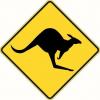I'm pretty new to the Neanderthal thing, and have been slowly learning through trial an error.
I've found that Japanese vs Western vs Chinese tools- have various pros and cons. But I'm not sure if I'm wrong?
I'd like your insights.
Here's mine:
- Japanese
Great blades, sharp, high performance, closer feel to the wood
Technique sensitive, expensive, high maintenance (unstable soles)
Imho, the saws make most sense in pulling on tension-- especially joiners saws.
- Western
Okay blades (hock, LN, LV). Sharp. Good to high performance. Less maintenance due to metal bodies
Con- finicky setup sometimes (older Stanley combo planes). Many newer manufacturer s have poor quality (groz, Stanley)
My understanding is Western spokeshave is superior to Japanese version.






 Reply With Quote
Reply With Quote






